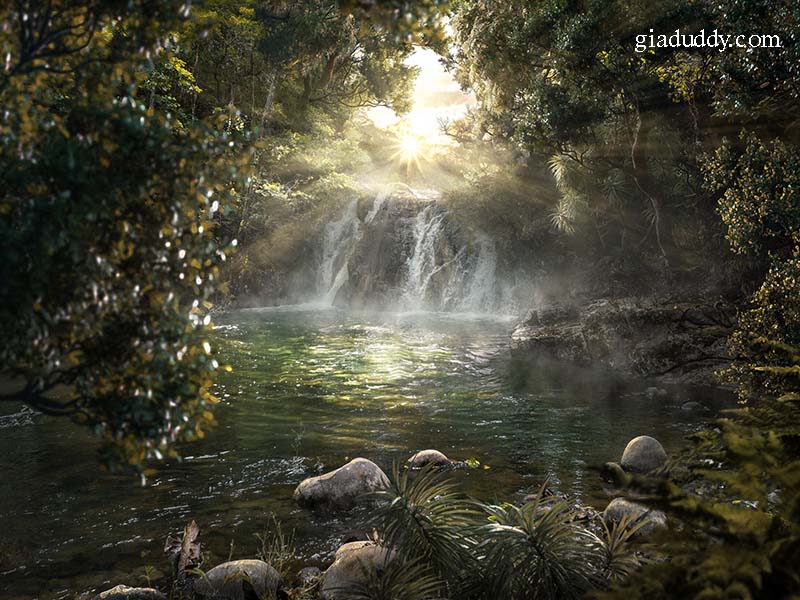The Garden of Eden has captivated the imagination of many throughout history, often described as a paradise where humanity’s journey began. The inquiry into where the Garden of Eden was located has perplexed theologians, historians, and archaeologists alike for centuries. This article aims to explore various theories and evidence regarding the location of the Garden of Eden, shedding light on its geographical, historical, and theological significance.
Understanding Garden of Eden Located
The Garden of Eden is prominently featured in the Book of Genesis, the first book of the Bible. It describes a utopian paradise created by God, filled with beauty and abundance. In this sacred space, Adam and Eve, the first humans, lived in harmony with nature and God until their disobedience led to their expulsion. This foundational narrative has led many to seek the Garden’s exact location, a quest that combines religious belief with geographical exploration.
Biblical References and Descriptions
The Bible provides some clues about the Garden’s location through descriptions of four rivers that flowed from it: the Pishon, Gihon, Tigris, and Euphrates. The mention of these rivers has led many scholars to propose various locations in the Middle East, particularly in regions surrounding modern-day Iraq.
The Four Rivers
- Pishon: Described as flowing around the land of Havilah, where there is gold. Its exact identity remains unclear, but some believe it may refer to a river in Arabia or even the Nile.
- Gihon: This river is said to flow around Cush, often associated with Ethiopia or a region south of Israel. Its identification remains speculative.
- Tigris and Euphrates: These two rivers are well-known and still exist today, flowing through Turkey, Syria, and Iraq. They are often seen as the most credible geographical markers for locating the Garden.
Theories About the Location of the Garden of Eden
Various theories have emerged regarding where the Garden of Eden may have been located, ranging from specific sites in the Middle East to more symbolic interpretations.
1. Southern Mesopotamia
Many scholars argue that the Garden of Eden was situated in southern Mesopotamia, particularly near the confluence of the Tigris and Euphrates rivers. This area, known as the “Cradle of Civilization,” was home to some of the earliest human settlements, such as Ur and Babylon. The fertile land and abundant resources make this a plausible candidate for the Garden’s location.
2. Armenian Highlands
Another popular theory places the Garden of Eden in the Armenian Highlands, which encompasses parts of modern-day Turkey, Armenia, and Iran. Some biblical scholars suggest that the Tigris and Euphrates rivers may have originated in this region, making it a viable location for the Garden.
3. The Persian Gulf
Some researchers have proposed that the Garden of Eden could have been located beneath the waters of the Persian Gulf. This theory posits that during ancient times, the sea levels were lower, revealing a fertile land that corresponds with the biblical descriptions. The lost land of Dilmun, mentioned in Sumerian texts, has been linked to this idea.
4. Symbolic Interpretations
Some theologians and scholars argue that the Garden of Eden should not be viewed as a physical location but rather as a symbolic representation of humanity’s original state of innocence and harmony with God. From this perspective, the quest for a specific geographic location becomes less important than the moral and spiritual lessons conveyed by the narrative.
Historical and Archaeological Perspectives
While the biblical account provides a foundational understanding of the Garden of Eden, historical and archaeological evidence can help us piece together its potential location.
Archaeological Sites in Mesopotamia
Numerous archaeological sites in southern Mesopotamia, including Ur, Eridu, and Babylon, provide insight into early human civilization. These sites feature advanced agricultural practices and sophisticated urban planning, aligning with the idea of a lush and fertile Garden. Discoveries of ancient artifacts, irrigation systems, and religious texts contribute to our understanding of life in this region during biblical times.
The Influence of Ancient Cultures
The mythology and cosmology of ancient Near Eastern cultures, such as the Sumerians and Babylonians, often featured paradisiacal gardens, which may have influenced the biblical narrative. The Enuma Elish and the Epic of Gilgamesh, for example, contain themes of creation and divine gardens that echo the Genesis account.
Modern Discoveries and Research
In recent years, advancements in technology and archaeological techniques have enabled researchers to explore potential locations for the Garden of Eden more thoroughly. Satellite imagery and ground-penetrating radar have revealed previously unknown ancient sites in the region, igniting renewed interest in the search for the Garden.
The Role of Genetics and Anthropology
Modern genetic studies have also provided insights into humanity’s origins. The “Out of Africa” theory suggests that all humans share a common ancestry from a population that emerged in Africa. While this theory does not directly correlate with the location of the Garden of Eden, it highlights the interconnectedness of human history and the importance of understanding our roots.
Theological Significance of the Garden of Eden
Beyond its geographical implications, the Garden of Eden holds profound theological significance. It represents the ideal state of humanity’s relationship with God and nature. The narrative of Adam and Eve serves as a cautionary tale about the consequences of disobedience, emphasizing the importance of free will and moral responsibility.
The Concept of Paradise Lost
The idea of “paradise lost” resonates deeply within the human experience. Many religious traditions reflect on themes of fallibility, redemption, and the longing for a return to a state of grace. The Garden of Eden serves as a powerful symbol of this desire for restoration and reconciliation with the divine.
The Garden of Eden in Literature and Popular Culture
The Garden of Eden has permeated literature, art, and popular culture throughout history. From John Milton’s “Paradise Lost” to contemporary films and novels, the theme of a lost paradise continues to inspire creativity and reflection. The allure of the Garden resonates with universal themes of innocence, temptation, and the quest for meaning in life.
Conclusion
Where Was the Garden of Eden Located?
The quest to determine the exact location of the Garden of Eden remains an ongoing endeavor that intertwines faith, history, and science. While many theories suggest various regions in the Middle East, the ultimate answer may be less about geography and more about the spiritual significance of the Garden as a symbol of humanity’s original connection with God.
In exploring the question of where the Garden of Eden was located, we uncover not only the depths of human history but also the enduring quest for understanding our origins and the nature of our existence. As we navigate this journey, we are reminded of the timeless narrative that continues to inspire curiosity and reflection—a story of creation, loss, and the hope for redemption.
By delving into the Garden of Eden’s potential locations, we engage with profound questions about faith, history, and the human condition. Ultimately, the Garden of Eden symbolizes the innate desire for harmony with the divine, making its true location one that transcends geographical boundaries and resides within the hearts of those who seek a deeper understanding of their place in the world.


